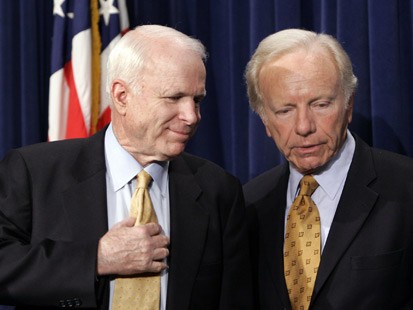Strategy: What It Is And Is Not
In a Bloomberg column titled “Want to Be the Next Apple? Lose the Bafflegab,” Virginia Postrel passes along some business advice that applies just as well to foreign and national security policy.
In his new book “Good Strategy, Bad Strategy: The Difference and Why It Matters,” Richard P. Rumelt, a strategy professor at UCLA’s Anderson School of Management, offers another explanation: the ruthless execution of good strategy.
Strategy is not what many people think it is. It is not a fill-in-the-blanks mission statement blathering about how XYZ Corp. will ethically serve its stakeholders by implementing best-in-class integrated sustainable practices to grow as a global leader while maximizing shareholder value. Such bafflegab is “Dilbert”-fodder that generates cynicism and contempt. It is, at best, a big waste of time.
Neither is strategy a declaration that the ABC Co. will increase sales by 20 percent a year for the next five years, with a profit margin of at least 20 percent. Strategy is not the resolve to hunker down and try harder — what Kenichi Ohmae of McKinsey criticized in a 1989 Harvard Business Review article as “do more better.” Effort is not strategy. Neither are financial projections. And neither are wishes.
A strategy “is a way of dealing with a high-stakes challenge,” Rumelt told me in an interview. “It’s a way around the obstacles or problems in a difficult situation.”
Every good strategy, he writes, includes what he calls the kernel: a “diagnosis” of the challenge (“What’s going on here?”), a “guiding policy” for dealing with that challenge (the core idea often called a strategy), and a set of “coherent actions” to carry out that policy (the implementation).
For his friend Stephanie’s corner grocery, Rumelt writes, the diagnosis was competition from a large 24-hour supermarket, the guiding policy was “to serve the busy professional who has little time to cook,” and the coherent actions included stocking more prepared meals and opening an extra checkout stand at 5:00 p.m.
This strategy not only told Stephanie what to do but what she had to stop doing. Selling more prepared meals meant taking space away from the munchies for her many student customers. To focus labor expenses on the peak times for her professional customers, she closed earlier, meaning no sales from late-night study breaks. “Strategy is scarcity’s child and to have a strategy, rather than vague aspirations, is to choose one path and eschew others,” writes Rumelt.
A strategy is not a goal like maximizing shareholder value or keeping America safe from terrorism. It’s not even a plan. It is a design — a coherent approach to defining and solving a particular problem, in which the different elements have to work together.
[…]
“Strategy is not a magic potion for overcoming any obstacle,” says Rumelt. “The part that’s hard to write about, that people reject, that they don’t want to hear me say, is that you may be facing an obstacle you can’t deal with. Choose a different obstacle. Play games you can win.”
In recent years, the security policy community has been debating the efficacy of counterinsurgency (COIN) doctrine, with supporters dubbed COINdinistas and opponents COINtras. Too often, though, the debate treats COIN as if it were a strategy rather than a ruleset for defeating insurgents. The thing COINtras are really opposed to isn’t counterinsurgency doctrine but the policy goal of occupying countries of marginal interest to the United States and trying to turn them into Sweden through the application of military force. While I concur in that analysis, that’s a problem with political decisionmakers, not FM 3-24 or JP 3-24.






This isn’t a recent phenomenon. It can be argued that due to poor understanding of strategy the U.S. hasn’t won a war since 1945. This applies both to politicians and generals, and confirms Niebuhr’s classification of Americans as “poltically incompetent”. Politics must always be included in consideration of strategic goals, and we seem to have lost the ability to do so.
FYI, Rumelt’s book is full of military examples as well. It’s not just about business strategy.
@Virginia Postrel: Thanks! I added the book to my Amazon shopping cart yesterday to investigate further but wasn’t sure if this was the extent of the insights.